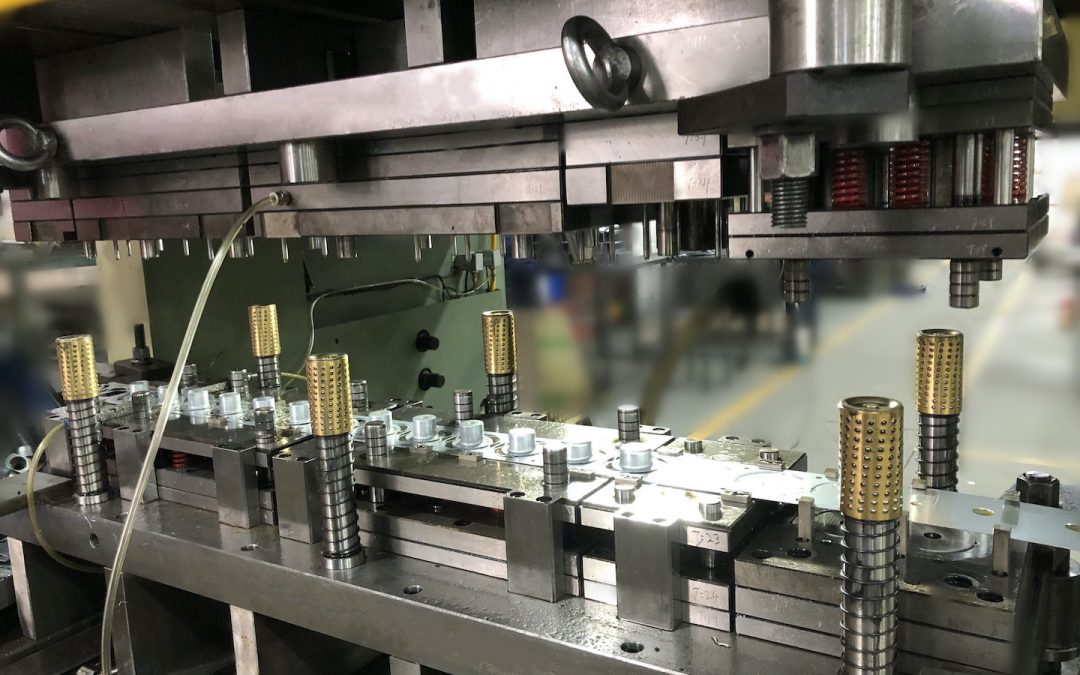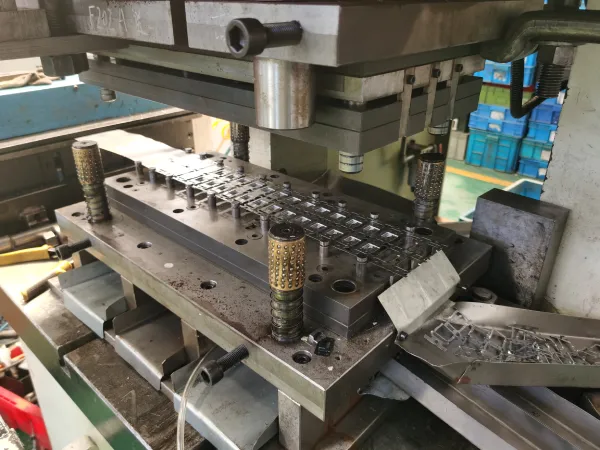Enhancing Efficiency and Top Quality Through Modern Steel Stamping Methods
As the demands for accuracy and performance proceed to rise, the assimilation of automation and electronic tools into the metal stamping procedure has actually ended up being vital. By checking out the elaborate interplay between technology, automation, and accuracy in steel stamping, a pathway in the direction of unparalleled performance and top quality assurance unfolds.
Advantages of Modern Steel Stamping
Modern metal marking deals various advantages in regards to performance, precision, and cost-effectiveness in the manufacturing sector. Among the essential benefits of modern-day metal stamping is its capacity to effectively produce high quantities of complicated metal components with constant quality. This procedure gets rid of the need for numerous operations as it can perform numerous tasks such as blanking, piercing, developing, and attracting a solitary operation.
Additionally, modern-day metal stamping allows manufacturers to attain tight resistances and exact specifications, making certain that each part fulfills the needed criteria. This high level of accuracy results in marginal material waste, lowered rework, and overall better product high quality.
Additionally, contemporary steel stamping is a cost-efficient manufacturing approach. The automation and high-speed abilities of modern-day stamping devices bring about lower labor expenses and faster manufacturing rates. This effectiveness not just reduces manufacturing expenditures but likewise makes it possible for companies to satisfy limited manufacturing deadlines and provide items to the marketplace much more swiftly. Essentially, modern metal marking deals an affordable edge to producers aiming to boost performance and quality in their procedures.
Advanced Technologies in Steel Stamping

One more essential technology changing steel stamping is the use of servo presses. Unlike typical mechanical presses, servo presses use greater control over the rate and pressure applied throughout the stamping process. This control not just enhances the top quality of the stamped components but additionally minimizes material waste and power consumption.
Additionally, advancements in simulation software program have made it possible for makers to practically examine and enhance the marking process prior to physical production begins. This online prototyping helps recognize potential concerns at an early stage, bring about cost financial savings and faster time-to-market for new items. Overall, these sophisticated technologies in metal marking are driving unprecedented degrees of productivity and high quality in the sector.
Improving Efficiency With Automation
The integration of automated systems has dramatically enhanced the effectiveness of steel stamping processes. Automation in steel marking operations uses a myriad of advantages, including boosted manufacturing rates, enhanced precision, and lowered labor costs. By using robot you could try these out arms and computer-controlled equipment, jobs that were previously taxing and vulnerable to errors can now be performed promptly and with amazing precision.
Automated systems have the ability to take care of repetitive tasks with consistency, leading to greater performance degrees and reduced cycle times. This enhanced effectiveness not just causes set you back financial savings but also guarantees a much more streamlined and trustworthy manufacturing procedure. In addition, automation permits for real-time monitoring and data collection, enabling manufacturers to identify and deal with issues quickly, further optimizing the overall efficiency of metal marking procedures.
In addition, automation advertises a much safer working atmosphere by minimizing the requirement for hands-on intervention in hazardous tasks. By passing on these duties to automated systems, employees can concentrate on more complex and value-added tasks, adding to a much more effective and productive workflow in the steel marking industry.

High Quality Control Steps in Stamping
Executing rigorous quality control actions is critical in making certain the precision and consistency of steel stamping processes. One of the key quality control procedures in steel stamping is carrying out normal inspections throughout the production cycle.
In addition, implementing sophisticated modern technologies such as automated vision systems can further improve the high quality control procedure by enabling real-time tracking and discovery of any kind of abnormalities during production. These systems use cams and computer system formulas to examine get rid of high accuracy and precision, decreasing the risk of defects getting away right into the last item.
In addition, developing a thorough documents system that videotapes quality assurance information and examination outcomes is crucial for tracking efficiency fads and assisting in continual enhancement efforts. By examining this data, manufacturers can identify possible locations for optimization and carry out restorative actions to boost the total high quality of their stamped products.
Enhancing Precision With Digital Tools
Using electronic tools can significantly boost the precision of metal marking processes, revolutionizing the means read what he said makers accomplish precision in their manufacturing. Digital tools such as computer-aided layout (CAD) software application enable the production of complex stamping layouts with exceptionally precise dimensions. By inputting comprehensive specifications right into the software, suppliers can guarantee that each stamped piece satisfies exact dimensional demands, decreasing mistakes and waste in the production procedure.
Additionally, the assimilation of sensors and real-time surveillance systems in stamping devices enables makers to closely keep an eye on the marking process and make prompt adjustments to make sure precise outcomes. These electronic tools give valuable data on variables such as stress, speed, and positioning, permitting quick recognition and correction of any type of deviations from the preferred requirements.
Conclusion
In verdict, modern-day metal stamping methods provide many advantages for enhancing performance and quality in making processes. By utilizing advanced innovations, automation, quality assurance measures, and digital devices, firms can enhance effectiveness, accuracy, and total efficiency. These developments in steel stamping not only improve production procedures however additionally have a peek at this site ensure consistent and premium results. Accepting these contemporary methods can cause substantial innovations in the production sector.